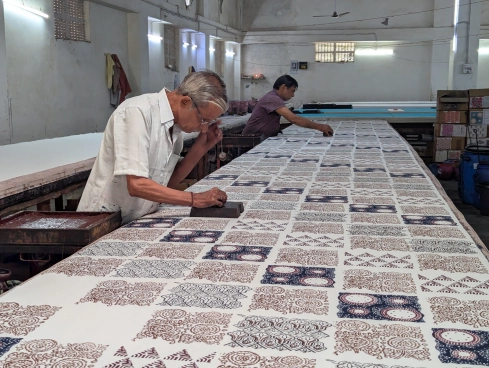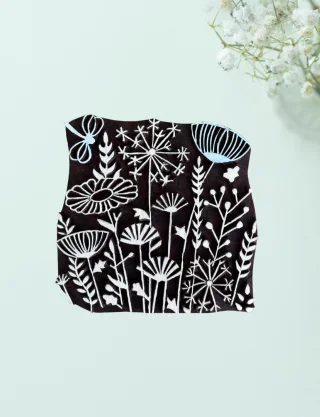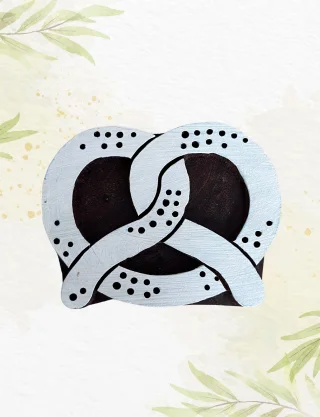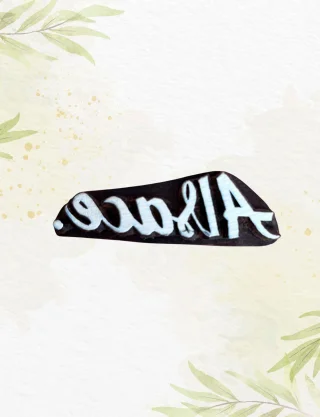Discover Block Printing: History, Art, and Techniques
Before the age of fast fashion, there was an art form that revolutionized the textile industry: hand block printing. This sustainable and intricate craft transforms simple fabric into a canvas of stories and traditions, using wooden blocks carved by skilled artisans.
The Rise of "Indiennes" and the Royal Ban
Block printing art was so popular in France due to the commerce with the east india company established in India that it got banned from manufacturing, importing and even wearing it !
This was done to protect luxury silk and wooden manufacturers in france. However, even jail sentence was ineffective in stopping this art from flourishing due to its extremely high demand.
Eventually this ban was lifted in 1759 and Mulhouse, which was a free city until 1798, was a key hub for this new industry. We can revisit this part of history with our printing blocks and by visiting the Musée de l'Impression sur Étoffes (Museum of Printed Textiles) in Mulhouse.
This museum, founded in 1833, houses one of the world's premier collections of printed textiles, with millions of samples spanning three centuries.
While the ban was a protectionist measure, it also highlights the incredible global demand for these vibrant Indian-inspired fabrics, known in Europe as 'indiennes.' It is in India that we find the true origins and a stunning variety of these printing traditions.
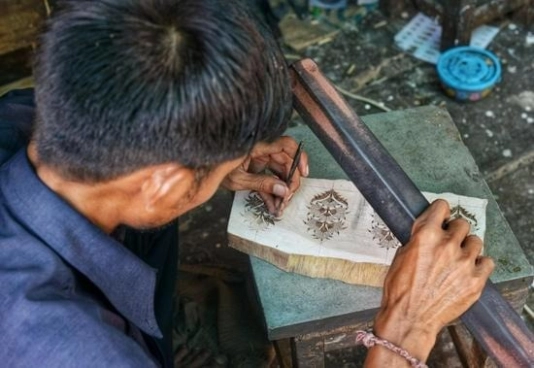
India's Timeless Art: Understanding the Styles
Various forms of hand block printing include Ajrakh, Bagru, Sanganeri, Bagh, Dabu, Kalamkari. The main differences between the printing styles lie in their geographical origin, characteristic motifs, and the specific dyeing and printing techniques used.
- Ajrakh: Originating in Gujarat and Rajasthan (Kutch and Barmer), Ajrakh is known for its complex, multi-stage process that can take up to 14 steps. Its hallmark is the use of resist-dyeing, where a paste is applied to block certain areas from dye. The designs feature intricate geometric and floral patterns, and the color palette is typically limited to a stunning combination of deep indigo and crimson red.
- Bagru: Practiced by the Chippa community in the village of Bagru, Rajasthan, this style combines the use of natural vegetable dyes and a unique resist-printing method called Dabu. Bagru prints are characterized by their earthy tones — often black, red, and blue — on unbleached cotton fabric. Motifs are typically traditional floral and geometric patterns.
- Sanganeri: Hailing from Sanganer, a town near Jaipur, Rajasthan, this style is known for its delicate and fine detailing. Unlike Bagru, Sanganeri prints are traditionally done on a white or light-colored background with intricate floral patterns (butas and bel) printed in a dense arrangement. The colors used are often light and pastel shades.
- Bagh: This style originates from the Bagh district of Madhya Pradesh. It's distinguished by its bold, symmetrical designs, often inspired by nature and ancient paintings, such as those found at the Taj Mahal. The predominant colors are a striking combination of red and black, created using a labor-intensive process that involves washing the fabric in the Bagh river to achieve the desired colors.
- Dabu: A unique mud-resist printing technique primarily from Rajasthan. The process involves stamping a mud-resist paste onto the fabric, covering it with sawdust, and then dyeing the cloth. The areas with the mud paste remain un-dyed, creating a beautiful and intricate pattern after the mud is washed off. Dabu is a technique often used in conjunction with other styles, such as Bagru.
- Kalamkari: While also a form of hand-printed textile, Kalamkari from Andhra Pradesh is a hybrid art form that combines both hand-painting and block printing. The name, derived from 'kalam' (pen) and 'kari' (work), refers to the use of a pen-like tool to draw outlines and motifs, which are then filled in with natural dyes, often depicting mythological stories and epic scenes.
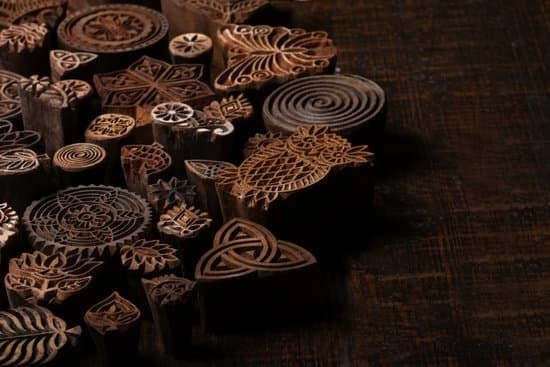
Become the Artist: Personalize Your World with Our Blocks
With the help of our Indian artisans , we plan to preserve this beautiful heritage. We are making hand crafted wooden blocks available to you so that you can be artist and decorate and personalize everything that you like.
When you go to a store and wish something was colored or shaped differently, and if only you could do something about it, now is your chance to fix this. With the help of our printing blocks, you can imprint on not just fabric but also paper, clay and walls !


